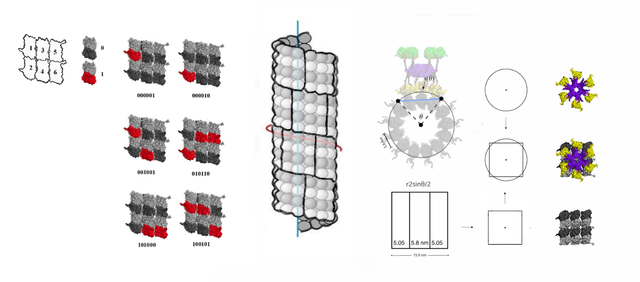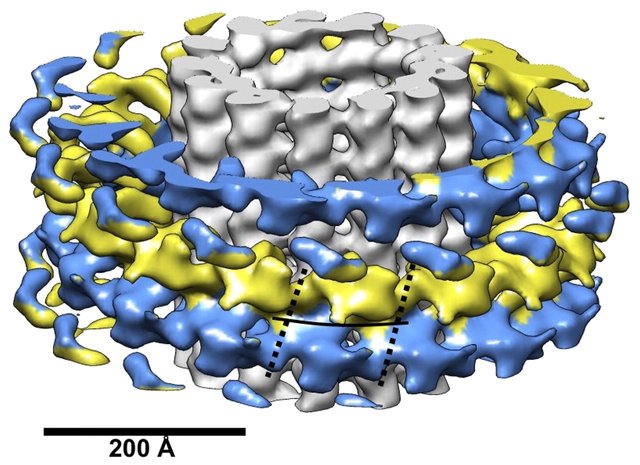In their seminal work, Craddock, Tuszynski and Hameroff described how tubulin dimers form memory bytes[1, 2], and how CAMKII, a protein that has been associated with long term memory for decades[3], binds to these memory bytes and writes data to them. I built on their work and suggested 6-tubulin memory bytes in the shape of blocks[4], forming a coil that makes up a microtubule, with a 4-start (4 monomer difference if seen as a 2D sheet) on a B-lattice type MT.

CAMKII as a write-mechanism and Dam1 as a read-mechanism
CAMKII has six arms, with one kinase domain each (double that actually, six arms on top and six arms on bottom) and is equipped to switch the state of up to 6 tubulin at once, as a bistable switch storing 2^6 = 64 possible states in each memory block, and since tubulin are tristable, each block can store 3^6 = 729 possible states, and it is easy to see how CAMKII could be a write-mechanism in MT lattices.

The idea for 6-tubulin memory blocks opens the potential that some type of Dam1-complex[5, 6, 7, 8] could be a read-mechanism[9], able to read six or so blocks every step, and slide along the MT while rotating, reading from the lattice with every turn it does, a rotating array of read-heads.

Synapses
Cytoskeletal Signaling: Is Memory Encoded in Microtubule Lattices by CaMKII Phosphorylation? (2012)
"Memory bytes" - molecular match for CaMKII phosphorylation encoding of microtubule lattices (2010)
Structure-function insights into the yeast Dam1 kinetochore complex (2009)
The yeast DASH complex forms closed rings on microtubules (2005)
Looks really wonderful such a cool and fantastic architectural design :)
Downvoting a post can decrease pending rewards and make it less visible. Common reasons:
Submit